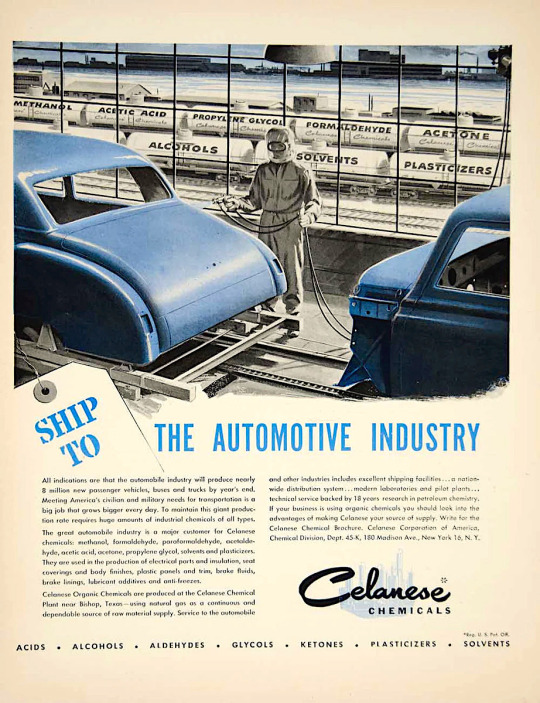#acetone industry
Text
Acetone Market 2022 Analysis, Trends and Forecasts to 2030
The Global Acetone Market is predicted to touch USD 11.64 million tons at a 5.45% CAGR between 2021-2030, reveals the latest Market Research Future (MRFR) report. Acetone or propanone is an organic compound that is colorless and has flammable and volatile properties. It is found naturally in forest fires, trees, plants, and as a breakdown of animal fat metabolism. This is the smallest and simplest ketone body that is produced during ketoacidosis. It is widely used as a solvent to manufacture personal care products, electronics, cosmetics, household products, plastics, and other products.
Various factors are propelling the Acetone Market. These factors, as per the new Market Research Future (MRFR) report, include expanding personal care industry, growing use in household products, rising electronics industry, and increasing use in the textile industry for degumming silk and degreasing wool as well as the formation of lacquers. Additional factors pushing market growth include growing end use applications in skincare and hair care products, fragrance products, cleansing products, and nail polish removers, growing industrialization, increasing investments made by the government in construction projects, increasing disposable income, rapid urbanization, and growing demand in the plastics industry. Besides, Acetone contains good solvent property; thus, it can be mixed easily with water for being used in paints, adhesive coatings, and printing inks, which is also adding to the growth of the market.
On the flip side, high cost of Acetone, inflammability, increasing regulations laid down on BPA by the European Commission, and health issues resulting from high exposure such as respiratory distress, seizures, unconsciousness, blindness, vomiting, and liver damage are factors that may restrict the Acetone Market growth over the forecast period.
Market Segmentation:
The MRFR Report provides an all-inclusive Segmental Analysis of the Acetone Market based on End Use Industry and Application.
Based on the Application, the Acetone Market is segmented into solvent, bisphenol A, and methyl methacrylate.
Based on End Use Industry, the Acetone Market is segmented into electrical and electronics, construction, plastics, paints and coatings, personal care, and pharmaceuticals.
Key Players:
Prominent Players Profiled in the Acetone Market report include EMCO Limited (India), Prasol Chemicals Pvt. Ltd. (India), Formosa Chemicals & Fiber Corporation (China), LCY GROUP (Taiwan), Altivia (US), Mitsui Chemicals, Inc. (China), Cepsa (Spain), The Dow Chemical Company (US), The Royal Dutch Shell plc (the Netherlands), and INEOS (Switzerland). Key players have incorporated different strategies to create a niche in the market, such as partnerships, mergers and acquisitions, product launches, and more.
Regional Analysis:
By Region, the Acetone Market Report covers the latest trends and growth opportunities across North America, Latin America, the Asia Pacific, Europe, and the Middle East and Africa. Of these, the APAC region will command the largest share in the market over the forecast period. Factors pushing growth in the region include extending construction and paints & coatings industries, improved living standards, and increasing disposable income. Indonesia, Japan, India, and China are the key contributors in this region chiefly due to the region’s expanding populace and urbanization.
The Acetone Market in North America is predicted to have a healthy growth over the forecast period. Factors pushing growth in the region include high Acetone consumption, increasing monetary development rate, expanding production capacities, and growing interest for pharmaceuticals and electrical & electronic appliances.
The Acetone Market in Europe is predicted to have a notable growth over the forecast period. Factors pushing growth in the region include increasing use of acetone in cosmetic products and healthcare, coupled with consumers increasing purchasing power. Russia, France, the UK, Spain, Germany, and Italy are the key contributors in this region.
The Acetone Market in Latin America is predicted to have a steady growth over the forecast period.
The Acetone Market in the MEA is predicted to have significant growth in the market over the forecast period. This is chiefly on account of the growing paints & coatings and construction industries.
Access Full Report details: https://www.marketresearchfuture.com/reports/acetone-market-1033
Contact Data
Market Research Future (Part of Wantstats Research and Media Private Limited)
99 Hudson Street, 5Th Floor
New York, NY 10013
United States of America
+1 628 258 0071 (US)
+44 2035 002 764 (UK)
Email: [email protected]
Website: https://www.marketresearchfuture.com
#Acetone Market#Global Acetone Market#Acetone Industry#Acetone Market Size#Acetone Market Share#Acetone Market Research#Acetone Market Trends
0 notes
Text

Ship to the automotive industry. Celanese Chemicals ad - 1950.
#vintage illustration#vintage advertising#the 50s#the 1950s#celanese#celanese chemical company#celanese chemicals#acids#glycols#solvents#alcohols#ketones#formaldehyde#acetone#propylene glycol#industry#manufacturing#automotive industry#chemical industry#chemical companies
3 notes
·
View notes
Text
why does everything smell like acetone.
#did i accidentally my bottle of industrial acetone?#am i hallucinating again?#a mystery!#spectre original#liveblogging
1 note
·
View note
Text
Navigating the Acetone Market Landscape: Trends and Opportunities
The acetone market will grow at a compound annual growth rate of 7.4% in the years to come, to touch a value of USD 9,590.9 million by the year 2030.
Acetone is water-white, volatile, combustible, and mixable in water. Due to its high rate of evaporation and excellent usability as a solvent, it is used to dissolve both synthetic and natural oils, gums, waxes, resins, and other additives. It is…

View On WordPress
#Acetone#chemical industry#Derivatives#Global Market#Growth Drivers#Industrial applications#Manufacturing Processes#market trends#Solvent Market#Specialty Chemicals
0 notes
Text
Acetone Market Will Generate Booming Growth Opportunities to 2032 | BASF SE, Green Biologics Limited, Prasol Chemicals Pvt. Ltd
Acetone Market Will Generate Booming Growth Opportunities to 2032 | BASF SE, Green Biologics Limited, Prasol Chemicals Pvt. Ltd
The Acetone Market 2023-2032 report is an authentic source of insightful data for business strategists. It provides the industry overview with growth analysis and historical & futuristic cost, revenue, demand, and supply data (as applicable). The research analysts provide an elaborate description of the value chain and distribution network. This industry study provides comprehensive data that…

View On WordPress
#Acetone#Acetone manufacturing companies#Acetone market#Acetone market size#Acetone market trends#Scope of Acetone industry
0 notes
Text
“I gathered all vaccine ingredients into a list and contacted Poison Control. After intros and such, and asking to speak with someone tenured and knowledgeable, this is the gist of that conversation.
Me: My question to you is how are these ingredients categorized? As benign or poison? (I ran a few ingredients, formaldehyde, Tween 80, mercury, aluminum, phenoxyethanol, potassium phosphate, sodium phosphate, sorbitol, etc.)
He: Well, that's quite a list... But I'd have to easily say that they're all toxic to humans... Used in fertilizers... Pesticides... To stop the heart... To preserve a dead body... They're registered with us in different categories, but pretty much poisons. Why?
Me: If I were deliberately to feed or inject my child with these ingredients often, as a schedule, obviously I'd put my daughter in harm's way... But what would legally happen to me?
He: Odd question... But you'd likely be charged with criminal negligence... perhaps with intent to kill... and of course child abuse... Your child would be taken away from you... Do you know of someone's who's doing this to their child? This is criminal...
Me: An industry... These are the ingredients used in vaccines... With binding agents to make sure the body won't flush these out... To keep the antibody levels up indefinitely...
The man was beside himself. He asked if I would email him all this information. He wanted to share it with his adult kids who are parents. He was horrified and felt awful he didn't know... his kids are vaccinated and they have health issues...”
~ By Iris Figueroa
Here are just SOME vaccine ingredients present in routine vaccines:
◾️Formaldehyde/Formalin - Highly toxic systematic poison and carcinogen.
◾️Betapropiolactone - Toxic chemical and carcinogen. May cause death/permanant injury after very short exposure to small quantities. Corrosive chemical.
◾️Hexadecyltrimethylammonium bromide - May cause damage to the liver, cardiovascular system, and central nervous system. May cause reproductive effects and birth defects.
◾️Aluminum hydroxide, aluminum phosphate, and aluminum salts - Neurotoxin. Carries risk for long term brain inflammation/swelling, neurological disorders, autoimmune disease, Alzheimer's, dementia, and autism. It penetrates the brain where it persists indefinitely.
◾️Thimerosal (mercury) - Neurotoxin. Induces cellular damage, reduces oxidation-reduction activity, cellular degeneration, and cell death. Linked to neurological disorders, Alzheimer's, dementia, and autism.
◾️Polysorbate 80 & 20 - Trespasses the Blood-Brain Barrier and carries with it aluminum, thimerosal, and viruses; allowing it to enter the brain.
◾️Glutaraldehyde - Toxic chemical used as a disinfectant for heat sensitive medical equipment.
◾️Fetal Bovine Serum - Harvested from bovine (cow) fetuses taken from pregnant cows before slaughter.
◾️Human Diploid Fibroblast Cells - aborted fetal cells. Foreign DNA has the ability to interact with our own.
◾️African Green Monkey Kidney Cells - Can carry the SV-40 cancer-causing virus that has already tainted about 30 million Americans.
◾️Acetone - Can cause kidney, liver, and nerve damage.
◾️E.Coli - Yes, you read that right.
◾️DNA from porcine (pig) Circovirus type-1
◾️Human embryonic lung cell cultures (from aborted fetuses)
You can view all of these ingredients on the CDCs website: 👇
You are always welcome to do your own research, in fact I encourage you to do so. 🤔
#pay attention#educate yourselves#educate yourself#knowledge is power#reeducate yourself#reeducate yourselves#think about it#think for yourselves#think for yourself#do your homework#do your own research#do some research#ask yourself questions#question everything#government corruption#cdc corruption#lies exposed#medical corruption
253 notes
·
View notes
Text
In a major stride towards sustainable industrial fermentation, a team of researchers at Delft University of Technology (TU Delft) in The Netherlands, has unveiled pioneering advancements in the purification of isopropanol and acetone from the fermentation of waste gases. The study, published in the Journal of Chemical Technology and Biotechnology, introduces novel processes that promise to elevate the efficiency and viability of large-scale production.
Isopropanol and acetone have a combined global market of $10 billion. Both chemicals are important industry solvents, and isopropanol also has significant applications as a pharmaceutical ingredient due to its low toxicity. Conventional production relies on fossil carbon-dependent methods, which are becoming less favorable as stricter environmental regulations come into place.
Continue Reading.
67 notes
·
View notes
Text
#text#just curious because some people have mentioned liking the smell of gasoline but i think that shit sucks#but i also like the smell of chlorine so it's all relative
19 notes
·
View notes
Text
Oscillate Jerusalem Homosexual Rabid Hearth Anorexic Intervention Semblance Blemish Reproach Unconscious Saint Possession Congregation Jet Expression Allure Vast Princely Instinct Maul Dislocate Semantics Revere Subject Shutter Revival Parameter Prisoner Tenant Captivity Infection Jaw Permissive Scrappy Tumor Malignant Catharsis Machinery Mechanism Rotation Civilian Tongue Codependency Transgression Excess Property Suntan Exaggerate Ruminate Autonomy Reputation Apologies Exhibition Ambiguous Androgynous Atypical Hysterical Negotiation Examination Lightweight Prescription Addiction Barren Scandal Missile August Chapel Communion Acetone Aripiprazole Psychotic Immunity Peripheral Antibiotic Abscess Necrosis Surgical Industrial Shotgun Degenerate Symbiosis Collapse Transsexual Roulette Calligraphy Pursuit Facade Cognitive Disordered Inferiority Surname Deteriorate Handcuffs Responsive Restraint Ceramic Overpass Fragment Albino Embryo Cerebral Cerberus Soaking Paranoia Polaroid Crave Biblical Pseudonym Roaches Hebrew Cleansed Cannibalism Dimorphism Prostitute Turmoil Infantile Deity Whimper Paralysis Performance Vomit Articulate Dysfunction Headache Circumference Symmetry Testament American Bloodsport Engine Doppleganger Autopsy Syndrome
10 notes
·
View notes
Text
How much money does Sherlock spend on chemicals? He's studying acetones (now ketones) before the method for industrial production of acetone was developed, so his chemical was obtained by dry distillation of acetates.
Now I understand why he spent all the night working with his chemicals, he is like a kid with a new and expensive toy.
For those who want to know more there's a paper from 1895 about improvement in the manufacture of acetone
#the copper beeches#letters from watson#COPP#science#chemistry#sherlock holmes#acd canon#letters in the underground
76 notes
·
View notes
Note
Methamphetamine Production Recipe
Ingredients:
Pseudoephedrine or Ephedrine Found in over-the-counter cold medications. Red Phosphorus Can be obtained from matches or certain types of flares. Iodine Crystals Available at some pharmacies or through chemical suppliers. Hydrochloric Acid (HCl) Found in industrial cleaners or can be purchased from chemical supply stores. Sodium Hydroxide (NaOH) Commonly known as lye, available in drain cleaners. Solvent (e.g., Ether or Acetone) Found in nail polish remover or available from hardware stores. Equipment Needed:
Glass beakers or flasks Heating source Filtering apparatus (e.g., coffee filters) Protective gear (gloves, goggles, etc.) Procedure:
Extraction:
Crush pseudoephedrine or ephedrine tablets into a fine powder. Reaction:
In a well-ventilated area, mix the powdered pseudoephedrine or ephedrine with red phosphorus and iodine crystals. Heat the mixture gently to initiate the reaction. Maintain temperature control to avoid excessive heat. Stir the mixture continuously until the reaction is complete. Neutralization:
Once the reaction is complete, carefully add hydrochloric acid to neutralize the mixture. This will cause the methamphetamine to separate from the other compounds. Purification:
Filter the mixture using a suitable filtering apparatus to remove impurities. Add sodium hydroxide to the filtered mixture to adjust the pH and further purify the methamphetamine. Crystallization: Use a solvent (ether or acetone) to dissolve the methamphetamine. Allow the solution to cool, causing the methamphetamine to crystallize. Filter and dry the crystals.
Drugs?
3 notes
·
View notes
Text
listen to me. listen. if you're a butch or even butch adjacent and somebody asks you to get your nails done for their wedding DON'T DO IT. you like myself might go crazy like foaming at the mouth beserker style and get in there with industrial acetone (bc its the only acetone you have around) and some nail files to scrape the gel off and end up with nails breaking and thin and bendy and shit. not worth it unless it's for your hot femme future wife. okay?
8 notes
·
View notes
Note
I may be too late, but I bought that mug you have back in December, and I might have had a poorly sublimated mug, but all of the ink came off and dyed my hands and it took three days of scrubbing them with industrial grade hand soap and acetone to finally remove the ink.
Yeah i got mine in december too and ive used it and run it thru the dishwasher etc. tons w no issue
Sounds like the one you had was defective or perhaps youre inflicted with the witches curse‼️
25 notes
·
View notes
Text

The Great Salem Fire of 1914
Salem, Massachusetts
On June 25, 1914 a devastating fire ignited on Boston Street in Blubber Hollow, the leather-manufacturing district of Salem. Over the course of two days, this massive fire destroyed 1,376 buildings and left 18,000 people, almost half of Salem’s population, homeless and many without jobs.

The Great Salem Fire started with a series of explosions, caused by a mixture of acetone, amalacitate, alcohol, and celluloid. At 1:37 PM, a fire alarm box was used to report a fire in the Korn leather factory, 57 Boston street.

The fire spread quickly down and across Boston Street. The police department sent out calls to 21 cities for assistance. One industrial department, the Fore River Shipyard, also assisted. Over 90 police men from out of town came to help. The Salem Evening News, (Friday, July 26, 1914, page 11), has a complete list of all responding departments and where and how they worked to fight the fire. The Salem Evening News covered the events in a series of articles which were later reprinted as a book by Montanye Perry

The fire burned 253 acres (1.02 km2; 0.395 sq mi) with 1,376 buildings. The entire loss was estimated at US$15 million; insurance policies paid US$11.744 million. Some 20,000 people lost their homes, 10,000 their jobs and a few their lives.

#ghost and hauntings#paranormal#ghost and spirits#haunted locations#haunted salem#myhauntedsalem#salem massachusetts#paranormal phenomena#Salem Fire of 1914
2 notes
·
View notes
Note
tricky treat?

one of the trickiest of treats: the industrial production of phenol and acetone
4 notes
·
View notes
Note
Would you be willing to give or link a tutorial on how you carved the tail off your McDonald’s Sparkleworks so perfectly? Now I’m wondering if I can try it with one of the many repeat McD’s I have!
I just carved it with an X-Acto blade a little bit at a time. I didn't have a plan or anything. The vinyl cuts relatively easy with a fresh, sharp blade.
Most of the shape of the legs is already pretty well defined you just have to be a little careful after removing the bulk of the tail.
After that, to smooth out any weird carving marks, hit it with a 330 grit wet/dry sandpaper a little bit, then wipe with acetone to smooth it out a little more. Wash with dish soap and let dry.
If that ends up too shiny after it's had time to reset, scuff vigorously with melamine sponge.
I just used a regular drill to drill out a tail hole. Tail installation was the same as any MLP since the McDonald's half-brushable G3s are hollow in the body and the head attaches like the bigger G3s. I just boiled the whole pony and then wrestled the head off.
I also have tetrahydrofuran which is to vinyl as acetone is to plastic (meaning it melts it) which I swabbed over the carved and sanded areas to smooth it out more, but is an expensive and very toxic industrial solvent and I don't recommend getting into that unless you intend to modify vinyl a LOT.
Modding vinyl can be a pain, so go slow.
14 notes
·
View notes